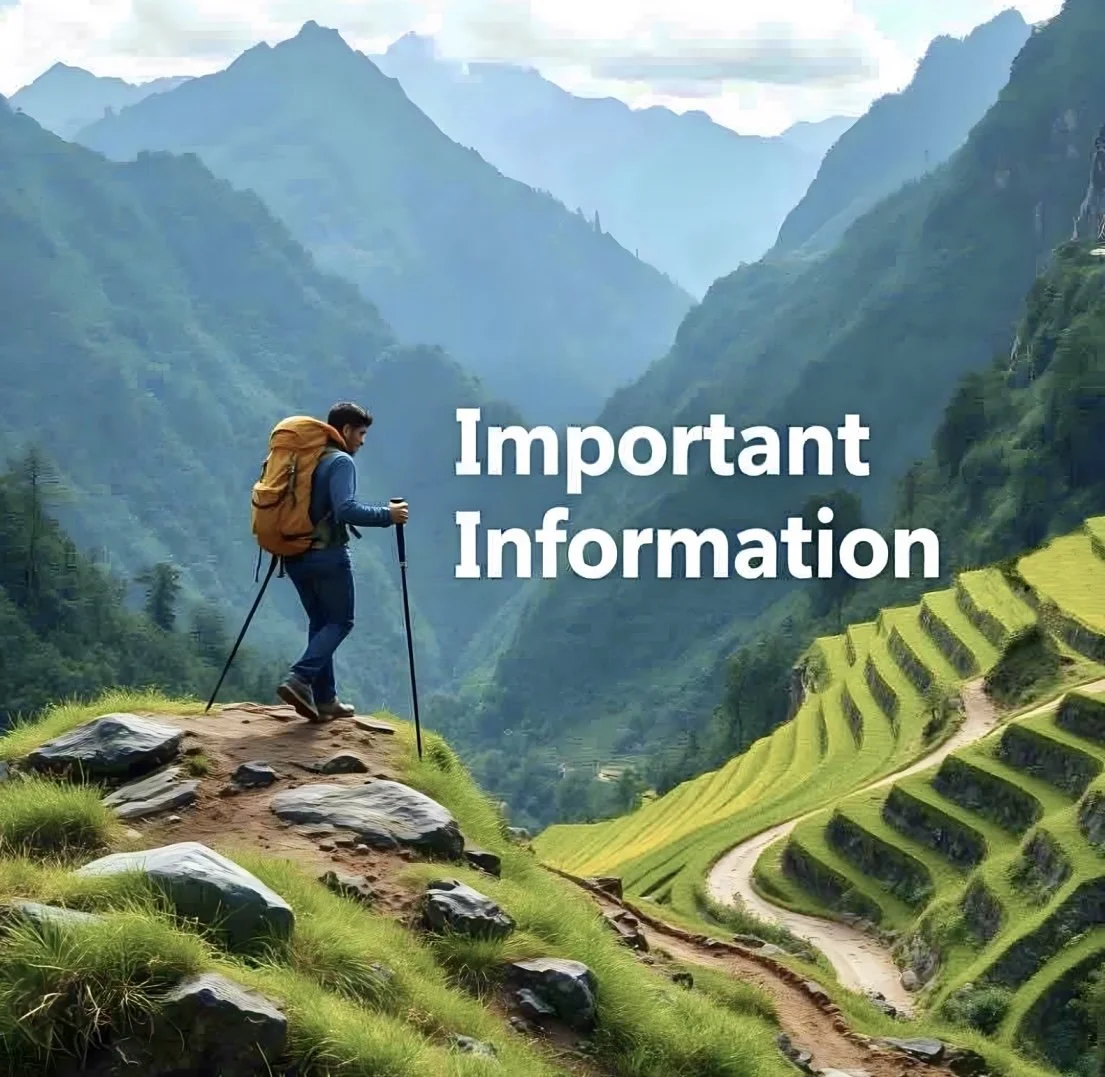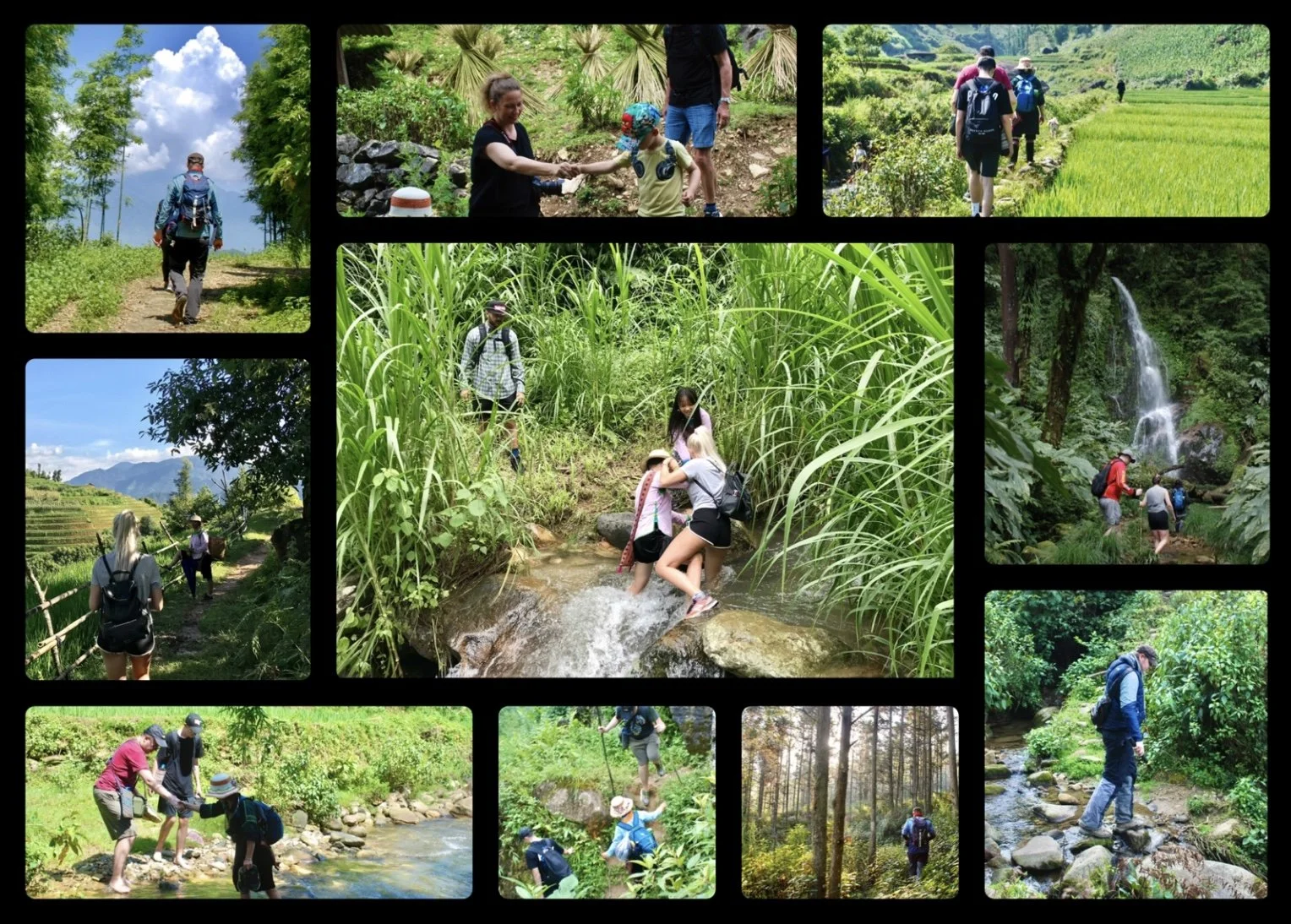Sapa Terrain: What to expect on the trails
Sapa is renowned for its breathtaking terrain and diverse topography. Nestled in the northern mountainous region, Sapa features steep hills and valleys, with elevations ranging from about 1,500 to over 3,000 meters above sea level. The landscape is characterised by terraced rice fields that cascade down the hillsides, creating a stunning patchwork of green during the growing season.
In addition to rice terraces, Sapa's terrain supports a variety of ecosystems, including lush forests, upland meadows, and unique flora and fauna.
The rugged mountain terrain means that all of our day treks and multi day treks involve considerable elevation gain and often steep descents. Trails are often narrow, with many challenges making the trekking technical. Sapa also has numerous rivers and streams that wind through the valleys, enhancing the picturesque scenery. Expect river crossings, bamboo bridges and frequent scrambles.
The dramatic slopes are often shrouded in mist, contributing to the region's ethereal beauty. The weather can also impact treks with increased challenge during or immediately after sustained periods of fog and rain. Routes are adaptable and discussions with your guide while trekking will allow you to tailor your experience.
It is important to note that many of more remote sections of our treks are not accessible by car or motorcycle.Overview of Sapa’s Landscape and Trekking Conditions
What to Bring
Bring as little as possible but bring everything you need. Travelling light is much less of a hassle, so do not bring things you can do without.
Thanks to its geographic condition, Sapa has one of the most favourable climates in Vietnam. The temperature remains stably cool throughout the year though winter may see more severe changes, with frost and even snow (mostly from mid-December to mid-January).
Trying to predict the weather in Sapa is almost impossible. However, here is our best attempt:
Sapa weather is characterised by sub-tropical climate. However, as a result of the high latitude, weather in Sapa is cool all year round. In summer, Sapa does not suffer the harsh heat like that in coastal plains. Temperature in summer fluctuates from 10 - 18 °C at night time and 20 - 32°C during the day. When the sun shines it can be harsh and even on cloudy days, expect to need sun protection. Rain and fog is possible throughout the year.
In winter, Sapa Town is often blanketed by fog and cold air. Temperature may fall to below zero Celsius.
Luggage and bags:
Most hotels in Sapa have temporary room for trekkers to wash up on arrival or departing from/to Hanoi. Most trekkers leave their main luggage in the room and take a lighter backpack for treks and homestays. ETHOS can store luggage securely should you require. A day pack to bring on your treks is essential.
Clothing/Shoes/Weather Gear:
Bring clothes to suit the season. Always keep your spare clothes in a watertight bag to ensure they stay dry if there is a sudden downpour. The Sapa climate is totally unlike the rest of Vietnam. Essential items to have for the trek are some layers of warm & light clothing (morning can be cold but get pretty warm during the day as you trek). A pair of sturdy trekking shoes is essential. A warmer clothing layer and raincoat/poncho is essential. These items are available to purchase in Sapa at good prices if required.
Photo Equipment:
Bring your camera or phone. Any camera will do. You will regret it if not bringing one!



